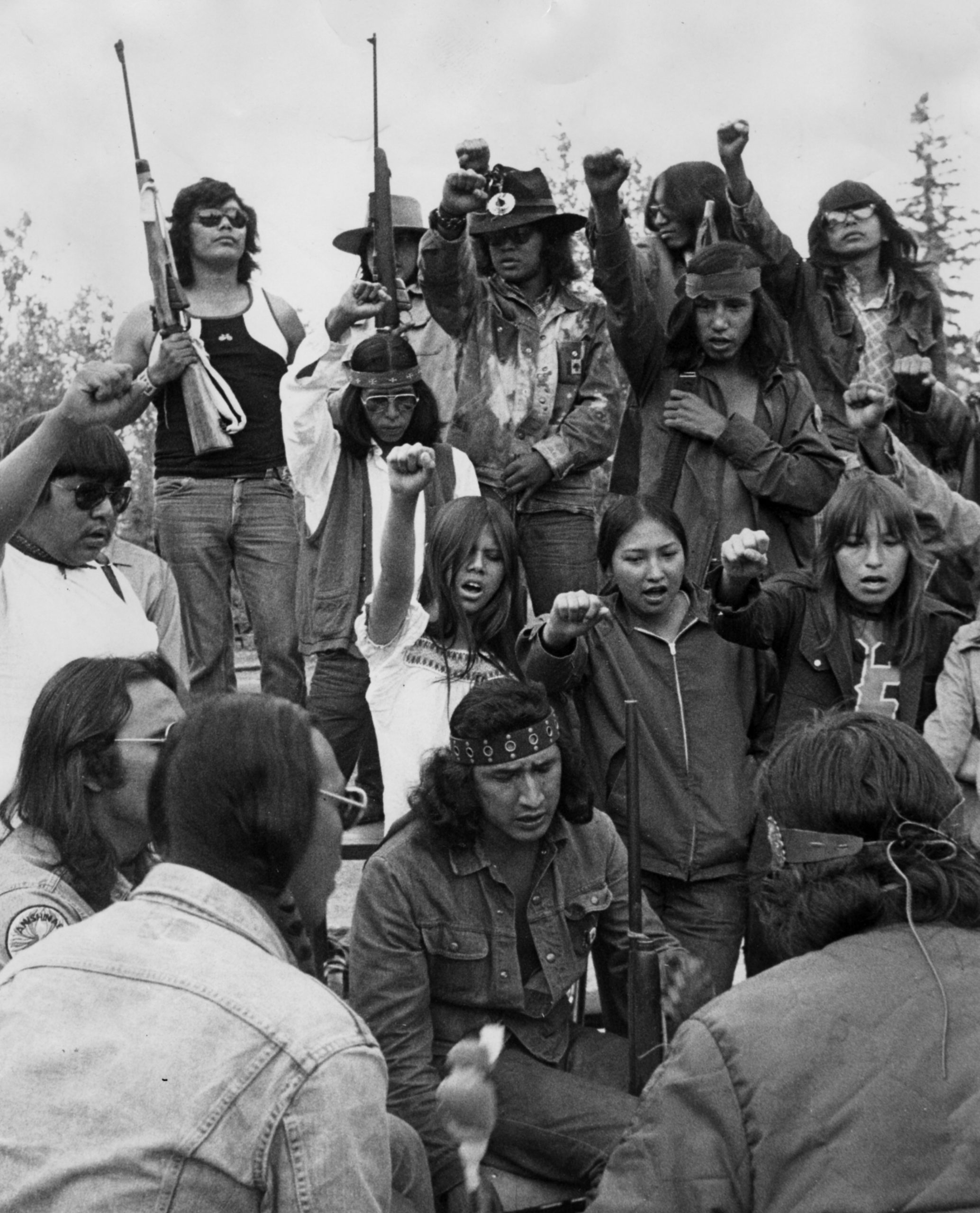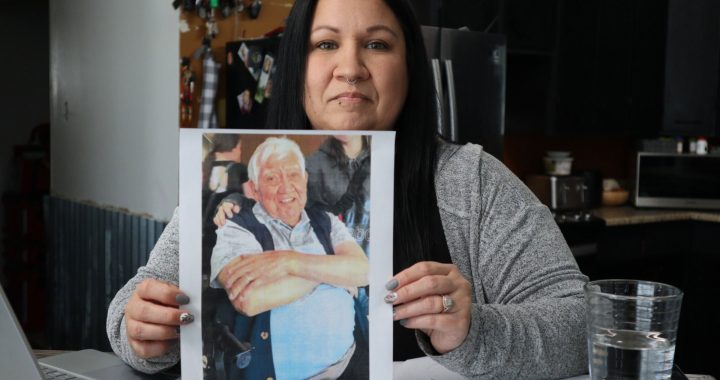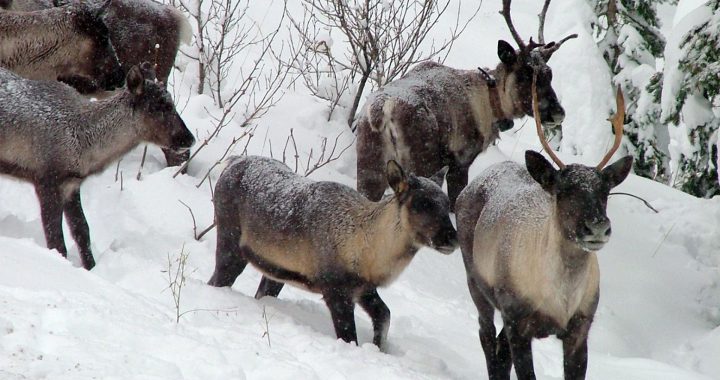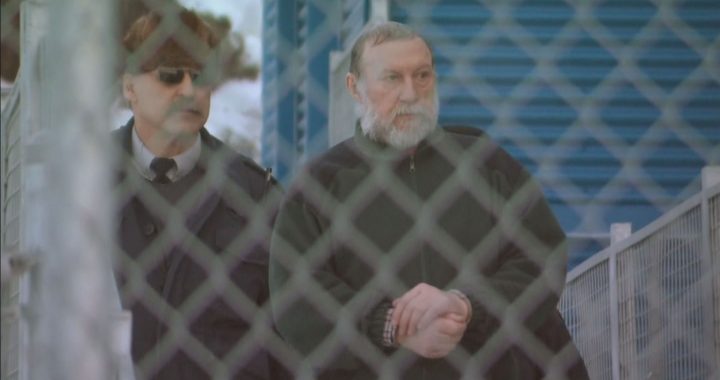When Elder Tommy Keesick describes what life was like for him in Kenora as a young man it sounds awfully similar to the deep south of the United States in the 1960s.
Segregation.
Beatings.
Deaths.
White supremacy.
“We couldn’t even walk the streets of Kenora,” recalled Kessick, 77.
“If you were only one Anishinaabe, walking the streets … you’d get beaten up.”
There was also a high number of sudden deaths in the Kenora area.
Nearly 200 of them between 1970 and 1973.
Emotions boiled over in 1974 when Keesick and the Ojibway Warrior Society took over Anicinabe Park demanding equality.
The armed stand-off lasted six weeks.
“We did this for the sakes of making our lives a little more better. Not for us, but for our children, because we were losing everything,” said Keesick, who speaks more about the occupation and racism in Kenora tonight in part two of ‘In Plain Sight’ on APTN Investigates.

Lorraine Major was also there.
“To me, everything just kind of came together like the housing, the unemployment, the deaths, the mercury poisoning, everything,” said Major, who was 31 at the time.
“And nothing [was] being done.”
But the hate they faced was deep-rooted.
A weed that just doesn’t die.
The attacks continued after the occupation.
Ken Nash was walking down the street when he saw a group of white guys hanging outside a restaurant.
They were waiting for a First Nations man to come out.
When he did, they jumped him.
“I remember standing across the street and being powerless,” said Nash, who was about 15 at the time.
“They swarmed him.”
But this time he wasn’t alone, at least not for long.
A group of Anishinaabe people spotted the attack and ran to the young man’s rescue, sparking a donnybrook.
“There was a street fight [and] the white guys ran away,” said Nash, now 62.
They have a name for these white people – the Kenora Indian Beaters.
A racist and violent gang of thugs.
“Passed down hate,” said Craig Lavand, 36, who knows the streets of Kenora better than most.
Lavand’s convinced the KIB exist today, just the same as the KKK.
It’s just taken on different forms over the years.
A story in the 1990s by the late journalist Gord Atkinson, made reference to the KIB at a protest in Toronto about clear-cutting at Grassy Narrows First Nation.
Atikinson wrote: “The blockaders back home have five binders full of support letters from people throughout North America and the world. But the peaceful group is being threatened by a group of non-Native thugs who call themselves the ‘Kenora Indian Beaters.’”
“They go around beating up Native people,” one of the people involved in the blockade told Atkinson at the time.
A 2007 report co-commissioned by several Indigenous groups also found evidence of KIB.
“There is a non-Native gang in Kenora known as the KIB (Kenora Indian Beaters) which go after Native people when they’re alone. They are about 15 to 21 years old and are usually skate boarders. An Aboriginal man was beaten by the KIB and was hospitalized and is presently in a coma,” said the report, attributing the information to a youth focus group.
Does that hate exist today?

APTN Investigates spent the last several months looking for the truth on the streets.
“Kenora hasn’t changed. The town has always been racist and still is,” said Keesick.
Nash agreed.
He doesn’t like coming into town to shop.
“No matter how well dressed you are you don’t really get that full service,” he said.
APTN didn’t find the KIB but they could be anyone walking by on the street.
We did find evidence of passed down hate.
We also found something else.
The sex trade is played out on the streets of Kenora.
There are no escorts in hotels.
No pricey advertisements online.
It’s the streets where the homeless women are battling addiction rooted in trauma.
They are targets for local men.
Just like Ruth Machimity was.
At least she was 20 months ago.
That’s how long Machimity has been sober, a journey that began in the local Kenora jail.
It’s there that she met Ken Nash, who was looking to help people find their way back to their culture.
But to get the Nash’s help, the person had to really want it.
“When I met her those were the things that we talked about. And I also realized, not to focus on, to tell her what she should be doing, I wanted that answer to come from her. The only part I acknowledged in our first encounter was that she was an intelligent woman, she knew what she was talking about and I knew she would do a lot for herself if the effort was there and the support was there,” he said.
Nash runs a healing lodge just outside of Kenora for Waasegiizhig Nanaandawe’iyewigamig Health Centre.
The lodge provides a culture-based healing program intended to break the cycles of violence, abuse and addiction.
“I always use the seven grandfathers’ teachings to reach out to clients and asking them that question, what is your goal being here? Reminding them that humility is a big word for us. We all get a lesson in humility and being here and in jail is definitely a humble experience that you need to be patient,” he said.

Patience and humility.
Two things Machimity had to find on her own.
“I wanted her to grow on her own as well … so it was great to see when she came to the healing lodge, continuing her journey to live that addiction-free lifestyle. That’s basically how I got to know her and I appreciate visiting her from time to time. She’ll message sometimes, see how things are on her end. [I’m] always reminding her to stay grounded, don’t let things get to you too much,” said Nash.
“She is well on her way and I hope more good things will come.”
Machimity was caught in the wide swath of addiction when she was on the streets of Kenora, as reported by APTN last week.
“I wandered around [downtown] for four or five years, aimlessly around a five block radius,” she said.
“And lot of the nights I just spent walking back and forth.”
She fell into the sex trade and met all sorts of people in town.
People she said who are held in high regard, like police officers.
One officer, in particular, is now under criminal investigation for his alleged involvement with Machimity.
“With being on the street and having to do the things that I did to make money for my addiction, I always felt a deep heaviness about that because I knew what I was doing wasn’t necessarily morally right for anybody,” she said.
See related: OPP launched investigation into officer following sex trade allegations
But she had a few decent people reminding her she could get out of that life.
After all, she was killing herself.
“Just having those people believe in me,” she said. “If I didn’t have people believing in me and saying that I could get out of it, I’d probably still be walking around.”
So much has changed in the last 20 months.

“I know my personality has changed, I know my demeanor has changed and incorporating my culture into my recovery is really key,” said Machimity.
Her culture is leading her home.
But it’s also helping fight the system, the hate in Kenora.
That’s what Craig Lavand believes.
Lavand said everything is set up to keep Indigenous people impoverished.
To keep them down.
Like a boot on their neck.
He said everyone from police to local agencies and governments are profiting off them.
Because people’s salaries are dependent on there being down and out people.
“Keeping people a statistic or a commodity, that’s all we are is a commodity and that’s just a sad truth, but what are the solutions now?” said Lavand.
“Like what are people, like myself, coming out of that system and realizing the changes that need to be made. And that’s kind of what I’m seeing more of for the future generations is listening to each other and not condemning someone for their past.”
Kenora’s non-Indigenous people can be broken into three groups.
Those that want to help, those that don’t and those that feed off the trauma, whether they know it or not.
Change is slow and the cycle continues.
Because if things completely change, a lot of people would be out of a job.
“I still see a lot of my friends on the streets to this day … sometimes we don’t get out of it,” said Lavand.
He found one of those people unconscious in front of Kenora’s Morningstar detox centre in late September.
Lavand, who has become a vocal grassroots advocate from the streets, tried to get the man help.
He took him to the detox door but they refused to let the man in.
Because he hadn’t showered in four days.
One of the workers also called Lavand a “dick” which was recorded on video and provided to APTN.
“Why are you yelling at me?” Lavand asks.
“Because you’re being a dick,” the female staff member replies.
The incident sparked an ongoing investigation by the Lake of the Woods Hospital District.
And it was being taken “very seriously” according to Ashley Hoffmeister, manager of quality, risk and clinical information.
But Hoffmeister refused to answer APTN’s questions.
“The investigation into this situation has been taken very seriously. To protect those involved and our ongoing commitment to patient/client privacy and safety, we wish not to comment any further on this matter,” she said, in an email. “In accordance with the Personal Health Information Protection Act, 2004, we request that you do not release the video to the public to protect and respect the privacy of our client.”
APTN wrote back saying the video would be published. We asked where this concern was the night the man was taken to the police station instead of detox.
Lavand sees this just as another example of the system working against Indigenous people.
There’s also something else.
“Talks around the dinner table have not changed,” he said.
“It’s passed down hate.”
Hate rippling through the generations alongside the trauma imposed on the Anishinaabe.
“Far too many times we see ignorance hide behind policy and procedure in Kenora … [and] when it’s documented it goes to internal reviews where everyone’s friends in this town so nothing becomes of it,” said Lavand.
Lavand is not afraid to confront these systems directly.
He said his strength comes from his culture.

He took APTN to a piece of land where his grandmother first told him about where, and who, he comes from.
“This really means a lot to me, this land, for my healing journey. Because this is where I came back to pay respects to my grandmother for teaching me a little bit of my culture for the first few years of my life,” said Lavand, who also goes back to pick sweetgrass every year and make offerings by a specific birch bark tree.
“And that’s something that’s very powerful for myself to be at the exact spot where my healing journey began. To be asked to make a trail for future generations to learn of what happened here. To educate people.”
Lavand grew up in the child welfare system and was living on the streets of Kenora at 11-years-old.
He’s still on them trying to fight the system.
And passed down hate.
“I’m going to give the people a voice,” he said.












